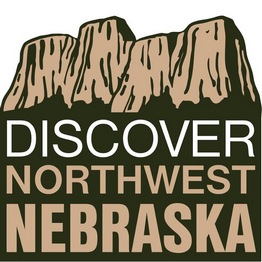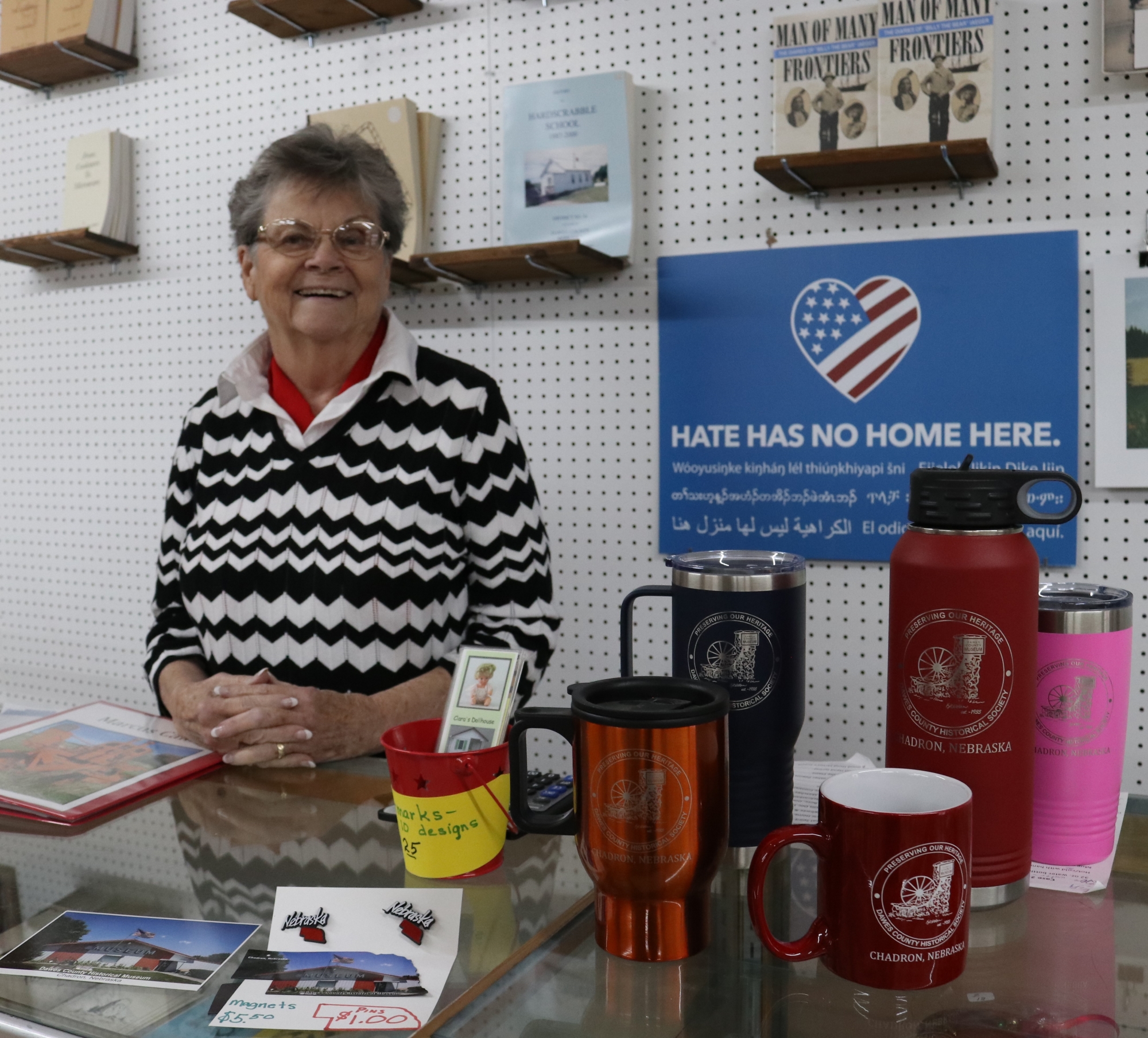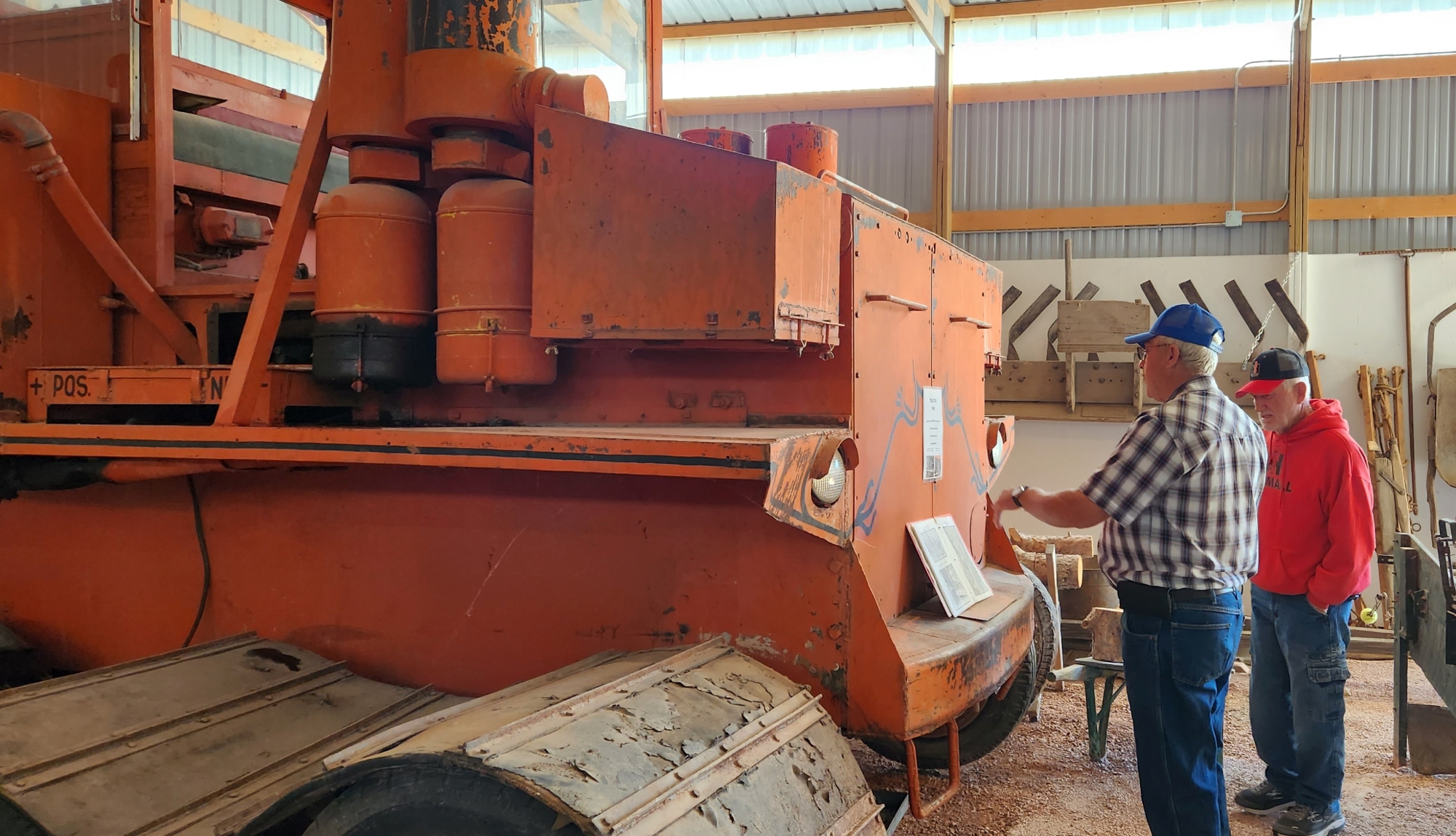![]()
By Kerri Rempp
Discover Northwest Nebraska

A visitor from Belgium found his way from a toy convention in New York to the Dawes County Historical Museum to view the Heesacker toy collection and the Erixson doll collection.
A local resident recently donated items to add a Vietnam exhibit to the military room, where Curator Phyllis Carlson enjoys the personal connections to Fort Robinson, where she lived during its time as a military post when her dad was stationed there and her uncle ran the bakery.
Personal stories are shared while visitors stroll through the Dawes County Historical Museum connecting points on a timeline, from Dawes County’s earliest days to the present, as young students bring their families back to the museum after taking part in Frontier Day.
“It’s like walking through your own history,” said Carlson, who retired as curator in October after 10 years at the helm.

Carlson, a retired teacher who taught in Sheridan and Dawes counties for 30 years, was first introduced to the museum through her in-laws. Father-in-law Dave Carlson served on the board, while mother-in-law Irene volunteered. In the summers, when she wasn’t teaching, Carlson would work at the museum as a volunteer alongside Irene.
When Belle Lecher was ready to retire as curator, the board reached out to Carlson about taking on the position.
“I could see the value of the place, and the goal of preserving the history of Dawes County,” Carlson said.
The Dawes County Historical Museum has a good base of volunteers, and she set a goal to get them more involved in the day-to-day aspects.
“I wanted to try to find ways to integrate our volunteers.”
She wanted the museum to be a place where volunteers enjoyed a positive attitude, cooperation and like values and goals while they worked to preserve the county’s history. Volunteers have taken on expanded roles with maintaining the exhibits, membership and research requests and record-keeping. In return, they’ve learned even more about the museum.
“It gave them ownership,” Carlson said.
Two major exhibits were added to museum during Carlson’s tenure, each requiring construction to house them. The Marcus Cain machinery collection from the Cullen family is a one-of-a-kind collection of farm equipment, all built by Marcus Cain during growth in the agricultural sector of the county. The museum raised funds to construct a building to house the equipment, and actually built it around the machinery. The collection has been featured in several agricultural publications, including Nebraska Farmer.

The Doll House was constructed to house a collection of an estimated 3,000 dolls donated by Clara and Richard Erixson. Clara was a doll maker and restorer in Lincoln for 20 years and had been searching for the right place to donate the collection. After the couple relocated to Crawford and visited the museum, they selected it as the recipient.
“It was her life’s work,” Carlson said. An endowment fund and grants made it possible to construct the Doll House, an addition to the museum’s Cove building.
It’s always a challenge to determine which donations to accept, Carlson said. A family considering a donation of an exhibit treasures the item.
“It meant a lot to the people, to the family,” Carlson said. But the museum is limited on space and must determine if the item or collection reflects a stage of growth in Dawes County first and foremost. Other considerations include the item’s condition and whether the museum already has the same item in its collection.
Over the years, the museum board, volunteers and curator have worked to create a museum that encompasses Native American history, settlement, agricultural and business growth, railroad expansion and more.
“It hits all aspects of life,” said Carlson, who when pressed, said she especially enjoys the doll and surgical collections.
The museum also hosts several events each year, including Frontier Day, when local students get to attend school each May in the one-room schoolhouse on the museum property. A lot of students have made memories over the years at Frontier Day, and often bring their families to the museum and guide them on a tour.
Outside of Frontier Day, the museum strives to make its exhibits kid-friendly so children can connect with the past on their level. During a tour, kids can take part in a scavenger hunt, try their hand at using an old-fashioned typewriter and rotary phone or have a tea party in the Doll House.
Each September, History in Action Day encourages visitors of all ages to explore days gone by as they churn butter, shell corn and press apples. The summer Garden Party highlights an aspect of the museum and provides a closer look at some of the exhibits.
In 2022, the Dawes County Historical Museum hosted a Smithsonian exhibit on rural America and took part in the Nebraska State Tourism Passport Program.
“It was a thrill to do the Passport Program. It was just wonderful,” Carlson said.
The museum is unique in that it allows visitors to see and touch the exhibits up close.
“It’s not behind glass,” Carlson said, noting that one visitor remarked that of the 200-300 county museums he’d visited, Dawes County was the best.
During her decade as curator, Carlson has worked to grow the museum’s outreach and reputation.
She writes “Meanwhile Back at the Museum,” a feature for the monthly Golden Age Courier publication owned by the museum, established a Facebook presence and expanded its quarterly newsletter to 12 pages. She also designed posters, brochures, business cards and merchandise for the museum and oversaw the launch of a new website.
With the support of the board, she also created an extensive advertising campaign.
“(Advertising) has really brought the museum to the forefront,” she said. “Our outreach is much bigger than it was.”
The museum now receives research requests from overseas through its Facebook page and welcomed visitors from 9 foreign countries, 65 Nebraska cities and 41 states as of mid-October.
“The board has been great to work with, very supportive,” Carlson said, making it possible for all the accomplishments to happen. Rex Cogdill will take over as curator for the next year to continue the positive growth.
Though she’s stepping down as curator, Carlson plans to continue to volunteer at the museum.
“My whole 10 years have been a labor of love,” she said. “The people I’ve worked with have all made it such a pleasant journey.”
